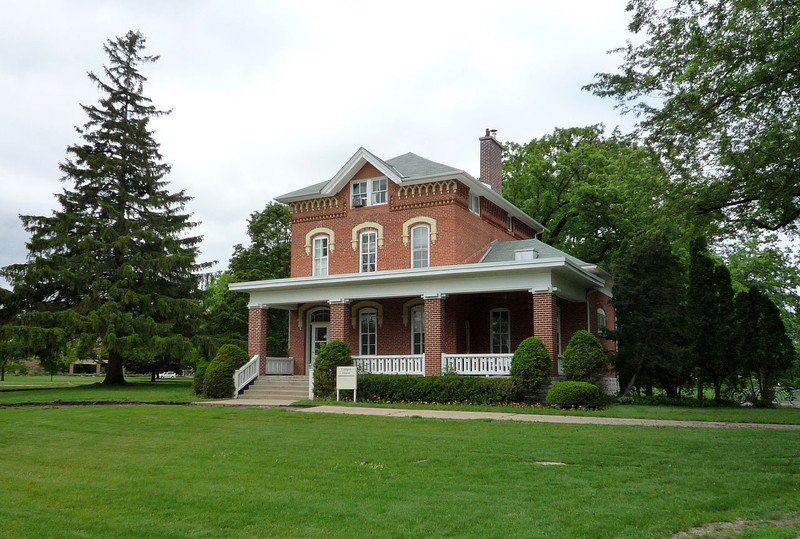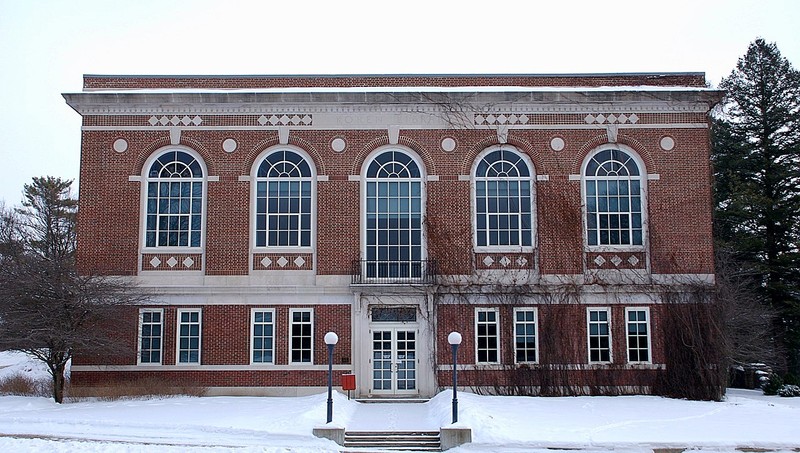Campus House (1867) Luther College
Introduction
Text-to-speech Audio
Campus House was built in 1867 and is the old structure on the campus of Luther College which was established in 1861 by the Norwegian Evangelical Lutheran Church in America. Luther College is historically significant in a number of ways. It represents Norwegian immigration to the United States and the successful establishment of Lutheran-based institutions across the country during the 19th century. It was also the first Lutheran college in the country to offer baccalaureate degrees. Luther College is significant for its architecture as well. The historic buildings on campus, which range in date from 1867 to 1969, comprise the Luther College Campus Historic District, which is listed on the National Register of Historic Places. Though designed in a variety of styles, the buildings were built with red brick, white stone trim, and light-gray concrete. Taken together, they help unify the appearance of the campus. They also reflect the growth and needs of the college during its first one-hundred years.
Images
Luther College was established in 1861. This building, the Campus House, was built in 1867 and is the old structure on campus.

The Main Building was constructed in 1952. It stands on the site of two previous Main buildings.

This attractive building is Koren Hall. Built in 1921, it now houses the social science departments.

Backstory and Context
Text-to-speech Audio
Large numbers of Norwegian Lutherans immigrated to the United States during the 19th century, particularly between 1825 and the start of the Civil War. The primary motivation for making the long journey across the Atlantic was to own land. Since Norway is mostly mountainous, the amount of cultivatable land is limited, and ownership was usually passed down to sons through inheritance. By 1845, there were only around 78,000 landholders in Norway. As a result, many Norwegians had little hope of acquiring property of their own and made the decision to embark on a new life in America.
Many settled in Wisconsin and the Upper Midwest. In Iowa, Decorah attracted Norwegians in large numbers. The town was situated in timbered land at the edge of the prairie. It also had a U.S. Land Office. Early immigrants favored timbered land since it was similar to what they were used to in Norway. Consequently, Decorah grew significantly in the early 1850s and established itself a center of Norwegian culture in northeastern Iowa.
The immigrants brought their Lutheran faith them. At the time, Lutheranism was the state religion in Norway and it was characterized by a hierarchical system with educated, trained pastors who believed they were the only ones who could preach. In the United States, the lack of ordained clergy concerned these men and those in Norway. In 1853, a group of these pastors established the Norwegian Evangelical Lutheran Church in America (NELC) near Madison, Wisconsin. To ensure a steady flow of educated, ordained pastors in frontier communities in the Upper Midwest, the NELC established a seminary and raise funds for school buildings in October 1857.
Classes did not initially begin in Decorah, however. They began in 1859 at Concordia College in St. Louis where a Norwegian pastor named Rev. Laurentius Larsen had been named professor to the students. His appointment on October 14, 1859 was later declared the Founders' Day of Luther College. The outbreak of the Civil War forced Concordia College and the seminary to close. The NELC did not give up, however, and opened a small college with 16 students near present-day La Crosse, Wisconsin in September 1861. The college moved to Decorah permanently the next year. Classes were held in a building that is still standing on the corner of Winnebago and Main Streets. The college built the first building on campus, called "Main", in 1865.
For many years, the college adopted a classical curriculum and was only open to men. The main goal was still to train students to become ministers. However, the college accepted non-Lutheran students and its offering of non-theological classes made it unique among Lutheran institutions of higher learning in the Midwest. Rev. Larsen, who was classically educated, was responsible for implementing the classical curriculum. The college ended this in 1932 when it adopted a liberal arts curriculum. Students no longer had to take Greek and Latin from that point forward. Women were allowed to enroll in 1936.
Over time, other buildings were constructed and the campus grew. The buildings were designed in a number styles including Italianate, Late Victorian, and Mid-century Modern. Not all of the early buildings have survived, including the first two Main buildings. The Campus House, which was built in 1867 and was used as a parsonage, is the only one from the 1860s still standing. Several buildings were erected in the 1960s and then in then in the 1900s and 2000s.
Sources
Full, Jan Olive. "Luther College Campus Historic District." National Park Service - National Register of Historic Places Nomination Form. March 2, 2021. https://www.decorahia.org/wp-content/uploads/2020/01/Luther-College-National-Register-Application-Full-Application.pdf.
"History." Luther College. Accessed March 23, 2022. https://www.luther.edu/about/history.
All images via Wikimedia Commons: https://commons.wikimedia.org/wiki/Category:Luther_College_(Decorah,_Iowa)
